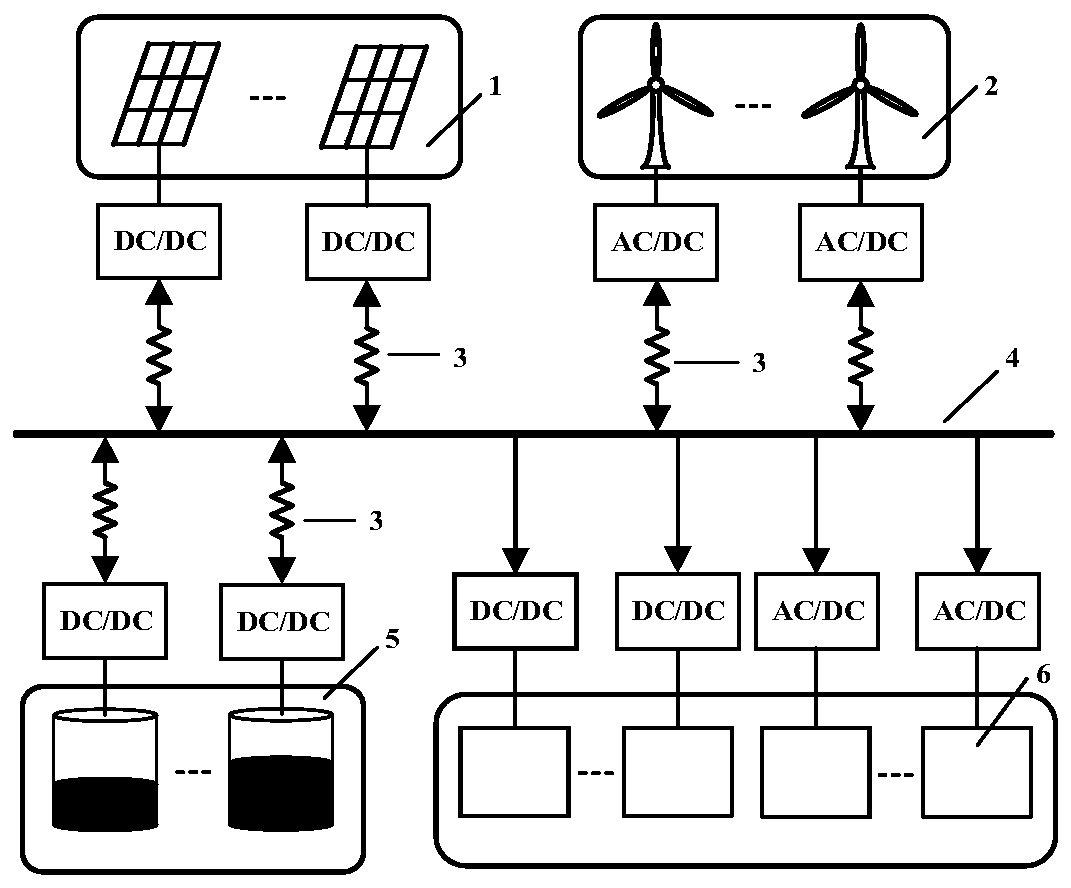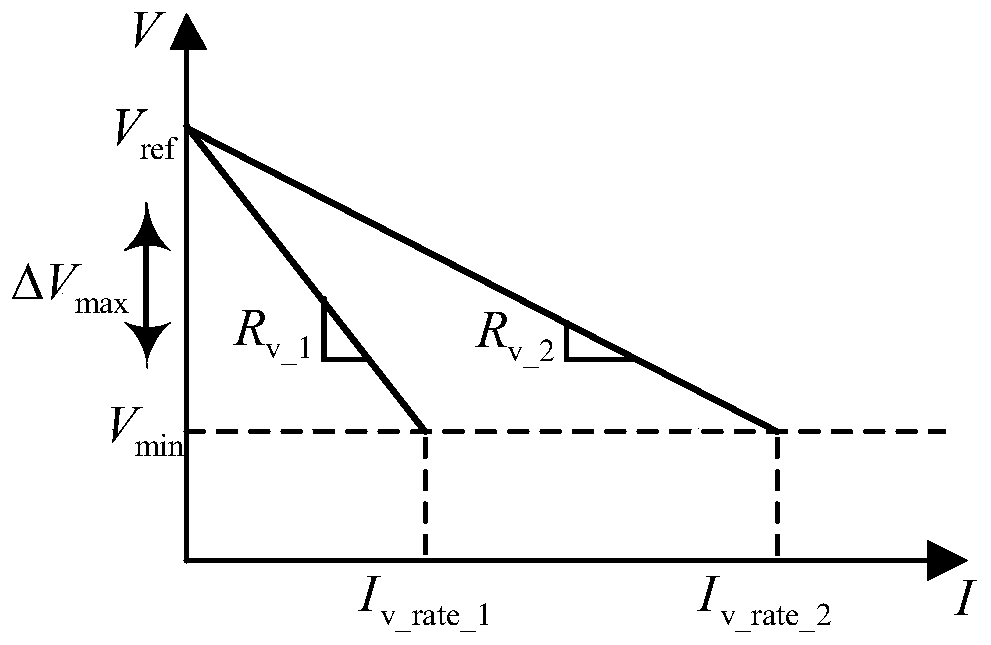Droop control method for DC microgrid in off-grid state
A technology of DC microgrid and control method, which is applied in the direction of load balance in DC network, parallel operation of DC power supply, DC network circuit device, etc., and can solve the problem of SoC unable to achieve balance, DC bus voltage deviation, and state of charge not considered, etc. problems, to avoid excessive charging and discharging, fast speed and high accuracy
- Summary
- Abstract
- Description
- Claims
- Application Information
AI Technical Summary
Problems solved by technology
Method used
Image
Examples
Embodiment
[0056] Such as figure 1 As shown, a typical DC microgrid includes a DC source (such as photovoltaic 1), an AC source (such as wind turbine 2), an energy storage system 5 and a load 6, which are all connected in parallel with the bus 4, and photovoltaic 1, wind turbine 2 and energy storage system 5 Both have line resistance 3 .
[0057] In the DC microgrid, the load distribution method mainly adopts droop control, and the traditional I-U droop control expression is:
[0058] V out =V ref -R v I out (1)
[0059] In the formula, V out and I out is the output voltage and output current of the DC / DC converter; V ref is the reference voltage; R v is the virtual impedance.
[0060] SoC imbalance analysis: SoC i Represents the current state of charge of the i-th energy storage unit, which can be defined as:
[0061]
[0062] where SoC i_0 Represents the initial state of charge of the i-th energy storage unit; I i Represents the output current of the i-th energy stora...
example 1
[0099] Example 1: Normal charging / discharging of energy storage system
[0100] When the DC microgrid is running off-grid, the power supply and demand of the solar-storage DC microgrid system is generally balanced through the stable charging and discharging of the energy storage system. When the power generated by the photovoltaic system is greater than the power consumed by the load, the energy storage system is in stable charging. state. On the contrary, if the power generated by the photovoltaic system is less than the power consumed by the load, the energy storage system is in a stable discharge state. When the photovoltaic-storage DC microgrid system is running stably, the experimental waveforms of the energy storage system charging and discharging process are shown in Figures 5 and 6. Show.
[0101] The experimental results using the droop control method proposed in the present invention are shown in Fig. 5(a) and Fig. 6(a). From 0s to 5s, DESUs work in the traditional...
example 2
[0104] Example 2: Distributed power output power fluctuations
[0105] Example 2 verifies the sudden change in the output power of the photovoltaic system. The photovoltaic system increases the power generation due to the change of light intensity in 10s. At the same time, the energy storage system in the photovoltaic storage DC microgrid system switches from the discharge state to the charge state rapidly, which is guaranteed by adjusting the output power of DESUs. The system runs stably. The specific changes of ESS are shown in Figure 8. In Figure 8(a), each DESU is in the traditional droop control method stage from 0s to 5s. At this time, due to the existence of mismatched line resistance, the output current of DESUs will be unreasonably distributed, and the SoC of the energy storage system will not be able to achieve balance.
[0106] At 5s, each energy storage unit in the ESS switches to work in the droop control method proposed in the present invention. Then, in 10s, ...
PUM
 Login to View More
Login to View More Abstract
Description
Claims
Application Information
 Login to View More
Login to View More - R&D
- Intellectual Property
- Life Sciences
- Materials
- Tech Scout
- Unparalleled Data Quality
- Higher Quality Content
- 60% Fewer Hallucinations
Browse by: Latest US Patents, China's latest patents, Technical Efficacy Thesaurus, Application Domain, Technology Topic, Popular Technical Reports.
© 2025 PatSnap. All rights reserved.Legal|Privacy policy|Modern Slavery Act Transparency Statement|Sitemap|About US| Contact US: help@patsnap.com



